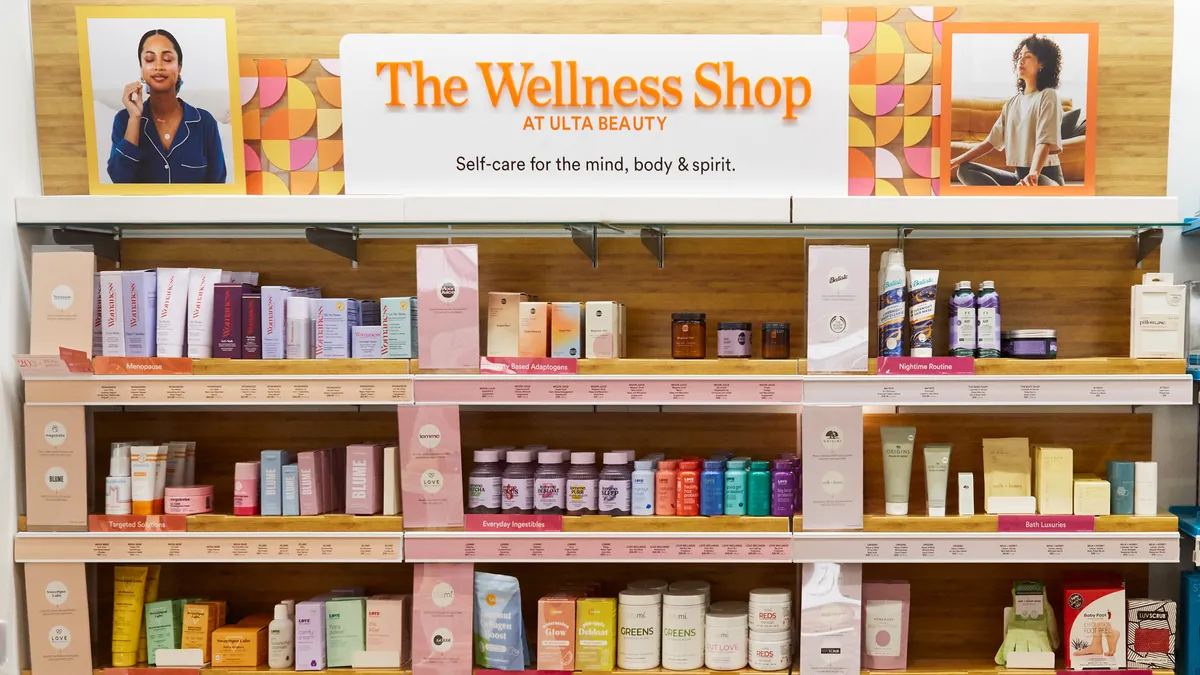A handful of holiday forecasts are in and things are predicted to be pretty merry, with sales possibly topping 5% growth from last year by some estimates.
But the November/December season hasn't been an industry-wide celebration for the past five years or so; instead, there are winners and there are losers, according to Kasey Lobaugh, chief retail innovation officer and omnichannel retail practice leader for Deloitte Consulting. While the consensus holds that a generally thriving consumer bodes well for the holidays this year, there is, of course, not one consumer but many, on a variety of budgets, facing a range of financial realities.
Even those who are financially comfortable can hit road bumps. The well-to-do sometimes take a hit that impacts their spending, as happened last year, when a December stock market slide was blamed for holiday sales trailing off. That could happen again this year: A manufacturing slowdown, the U.S.-China trade war, Brexit, political instability and uncertainty and recession fears were all blamed for helping tank the stock market the first week in October, and if portfolios stay slim it could mean a more meager season even for wealthier households. Those people, despite healthier checking accounts, feel less eager to spend because they're suddenly less wealthy, at least on paper.
But the harsh reality is that many others are struggling day to day, not least at the holidays. And low-income Americans are also often dragged down further by debt or, on the other side of that coin, held back by limited to no access to credit.
"The winners and losers ... are a reflection of the continued bifurcation of the consumer and the retail environment."

Kasey Lobaugh
Chief Retail Innovation Officer and Omnichannel Retail Practice Leader, Deloitte Consulting
"The winners and losers, if history and trends continue to play themselves out, are a reflection of the continued bifurcation of the consumer and the retail environment," Lobaugh told Retail Dive in an interview, referring to a stubborn wealth gap in the United States that appears to be once again worsening and in fact is "the biggest it’s ever been."
The Gini index, a standard economic measure of income inequality, for the U.S. in 2018 was "significantly higher" than 2017, after widening steadily for the last 50 years, according to a Sept. 26 report from the U.S. Census Bureau.
Lobaugh says that, while many analysts see millennial consumers as culturally different, their spending habits are better seen through this economic lens. Between 2007 and 2017 in the U.S., income growth for those with a mean annual household earnings of more than $100,000 rose a staggering 1,305% more than those with less than $50,000, according to a May report from Deloitte. The average net worth of consumers under age 35 has fallen by 34% since 1996; meanwhile, student debt for consumers under 30 increased by 160% between 2004 and 2017.
It's a problem that can touch multiple households, according to Keith Jelinek managing director at Berkeley Research Group. "Millennials are tremendously burdened by student loan debt. We know it's ballooned," he told Retail Dive in an interview. "But it's a burden that's not just on students but on parents, too."
That, and not technology or cultural quirks, is what is keeping many younger shoppers away from spending at retailers that traditionally appealed to middle income consumers, according to Lobaugh. And while younger consumers are seen as debt-shy, the reality is that fewer millennials have access to credit, compared to consumers at their age in other eras, he said.
"Millennials are tremendously burdened by student loan debt. ... But it's a burden that's not just on students but on parents, too."

Keith Jelinek
Managing Director, Berkeley Research Group
"Despite the fact that the economy at the headline level is 'doing well,' the division between haves and have-nots means that you can’t think of this in a simple consumer kind of way," he said. "And 'income' doesn’t even measure fully the difference because net worth includes things like the stock market, which really only flows to the higher-income consumer, and real estate. So now you’re talking about debt and it gets pretty interesting because debt amplifies the issue with the consumer."
"The issue" is a shrunken level of discretionary income that is sending consumers running toward discounts when they spend money on things they don't particularly need (and even some things they do). That leaves merchants that cater to middle income earners with a dearth of customers. Those retailers, notably department stores, are the losers. The winners are dollar stores, mass merchants that compete well on price, off-price stores and luxury brands catering to the 1%, according to Lobaugh.
Credit cards
Plastic (and most consumers still do use actual credit cards, although the use of digital payments is rising), is a mixed bag for retailers.
Many offer store cards of their own, usually with steep interest rates that can add meaningful amounts of revenue to their top lines. The holidays are a key time for consumers to say, "yes," to store credit offers, and last year retailers got almost a third of their customers to sign up. It can be a fleeting achievement: While three-quarters of Americans have had a store credit card, nearly half regret it.
Whatever their feelings of remorse, U.S. consumers of late have racked up an unprecedented level of credit card debt, according to WalletHub's latest Credit Card Debt Study. In the second quarter alone, consumers added $35.6 billion in credit card debt, an all-time record for that period of the year, WalletHub said.
"Credit debt can continue to grow without impact upon retail sales, until the defaults kick in."

Brian Kelly
President, Brian Brands
That might not all be accruing to retailers as some credit is used to cover necessities like food and medicine, the latter a significant financial challenge for many Americans. In a recent report on the financial health of U.S. households, the Federal Reserve noted that, if faced with an unexpected expense of $400, 27% of adults would borrow or sell something to pay for it and 12% would not be able to cover it. Additionally, a fifth of U.S. adults had "major, unexpected medical bills to pay," according to that report.
Still, shoppers are perhaps most amenable to ringing up credit cards at the holidays.
"The holiday season in particular is a time when more people apply for credit cards," WalletHub analyst Jill Gonzalez told Retail Dive in an email, noting that WalletHub data finds one in six people planning to apply for a new credit card for seasonal shopping. "Typically, people have a tendency to overspend each holiday season. Over a third of the population plans to spend more than $500 on holiday shopping. While discounts are always sought after, this does not mean that people will be spending less money this year than they did in previous years."
A perk or a problem?
On one level, debt can be a boon for retailers. After all, credit allows shoppers to spend, sometimes outside their means. But it can also get to a point where it threatens consumer confidence or ability to spend.
Sentiment is already showing signs of wobbling. Consumer confidence as measured by the Conference Board tumbled nine points in September. While the University of Michigan, by contrast, posted "small increases" for the month, that survey did find that "consumers have also expressed rising levels of economic uncertainty."
In short, debt works until it doesn't, warns Brian Kelly, president of consultancy Brian Brands. He too sees retail winners and losers, certainly if confidence slides or, worse, recession looms. He deems the estimates for 4% to 5% holiday sales growth "beyond optimistic," with department stores and specialty retail especially vulnerable.
"My hypothesis is that homeownership/mortgage, credit card debt and student loan debt are all [key performance indicators] as to the spending health of consumers," he told Retail Dive in an email. "Credit debt can continue to grow without impact upon retail sales, until the defaults kick in."























